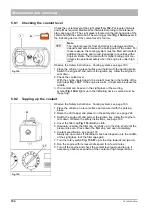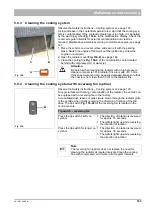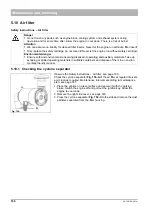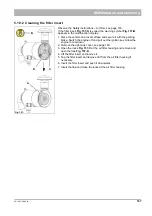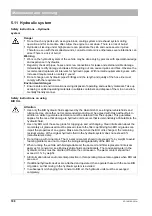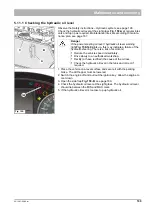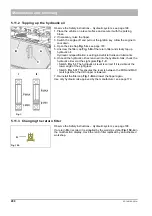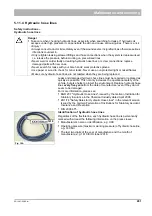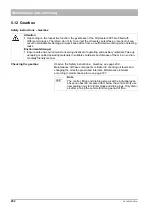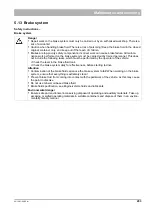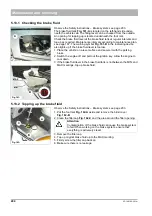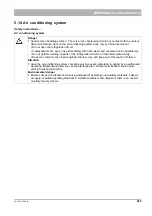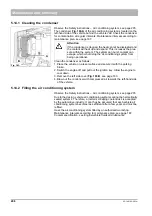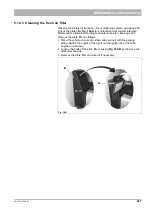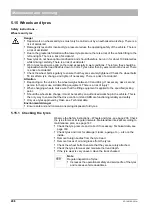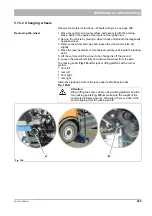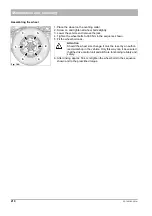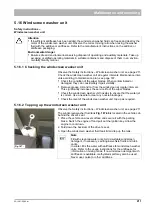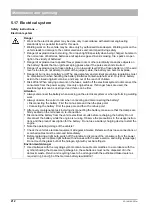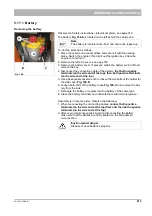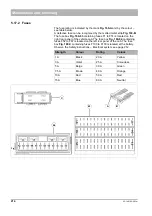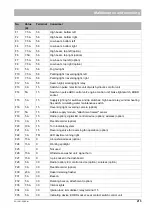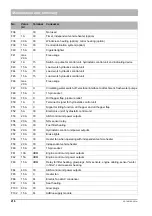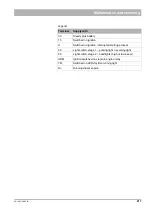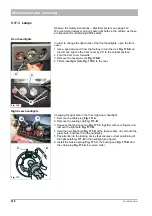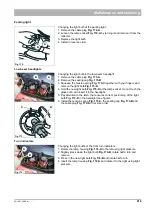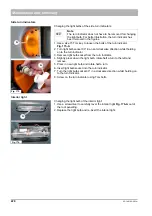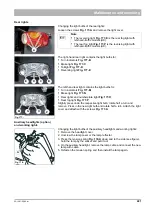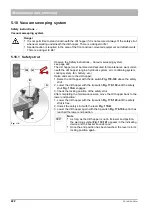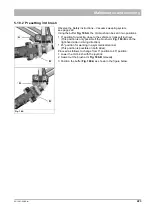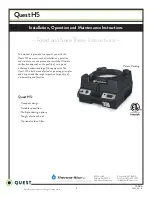
208
05-1481-00-00.fm
Maintenance and servicing
5.15 Wheels and tyres
Safety instructions –
Wheels and tyres
5.15.1 Checking the tyres
Observe the Safety instructions – Wheels and tyres, see page 208. Check
the tyres for wear at regular intervals. Maintenance intervals according to
maintenance plan, see page 167.
•
Check the tyre pressure and correct if necessary. Technical data, see
•
Check tyres and rims for damage (cracks, ageing etc.) – also on the
inside.
•
Remove foreign bodies from the tyre tread.
•
Remove traces of oil and grease from the tyres.
•
Check the wheel bolts to ensure that they are securely attached.
•
Check the tyres for wear and measure the tread depth.
•
If the tyre wear is very uneven: Have the track checked.
Danger
•
Repair work on wheels and tyres must only be carried out by an authorised workshop. There is a
risk of accidents!
•
Damaged tyres and/or incorrect tyre pressure reduce the operating safety of the vehicle. There is
a risk of accidents!
•
Due to the greater deformation with a lower tyre pressure, there is a risk of the vehicle tilting to the
left and right. There is a risk of accidents!
•
New tyres do not have optimum adhesion and should therefore be run in for about 100 kilometres
whilst driving carefully. There is a risk of accidents!
•
Worn tyres mean worse grip on the road, especially in wet conditions. Therefore, they should be
replaced when the tread depth is down to 3 mm. Tyres older than 6 years must not be used. There
is a risk of accidents!
•
Check the wheel bolts regularly to ensure that they are securely tightened. Check the wheel bolts
50 km after a tyre change, and tighten if necessary. There is a risk of accidents!
Attention
•
Depending on the version, the wheel weighs between 30 and 48 kg. If necessary, ask a second
person for help or use suitable lifting equipment. There is a risk of injury!
•
When changing wheels, make sure that the lifting equipment is applied to the specified jacking
point.
•
Should the wheel size change, it must be reset by an authorised workshop in the vehicle. This is
the only way to ensure that the drive control unit and ABS are functioning reliably and safely.
•
Only use tyres approved by Hako, see Technical data.
Environmental danger
•
Ensure safe and environment-conserving disposal of old tyres.
Note
Regular inspection of tyres:
•
Increases the operational safety and service life of the tyres
and reduces vehicle downtimes.
Summary of Contents for Citymaster 2200
Page 35: ...02 1481 00 00 fm 35 Operation Fig 3 34 31 29 32 33 34 35 36 37 30...
Page 39: ...02 1481 00 00 fm 39 Operation Fig 5 73 74 71 72 72 71 74 75 76 82 83 84 77 78 79 81...
Page 43: ...02 1481 00 00 fm 43 Operation Fig 7 114 116 117 118 119 120 115 113 112...
Page 236: ...236 05 1481 00 00 fm Maintenance and servicing...

